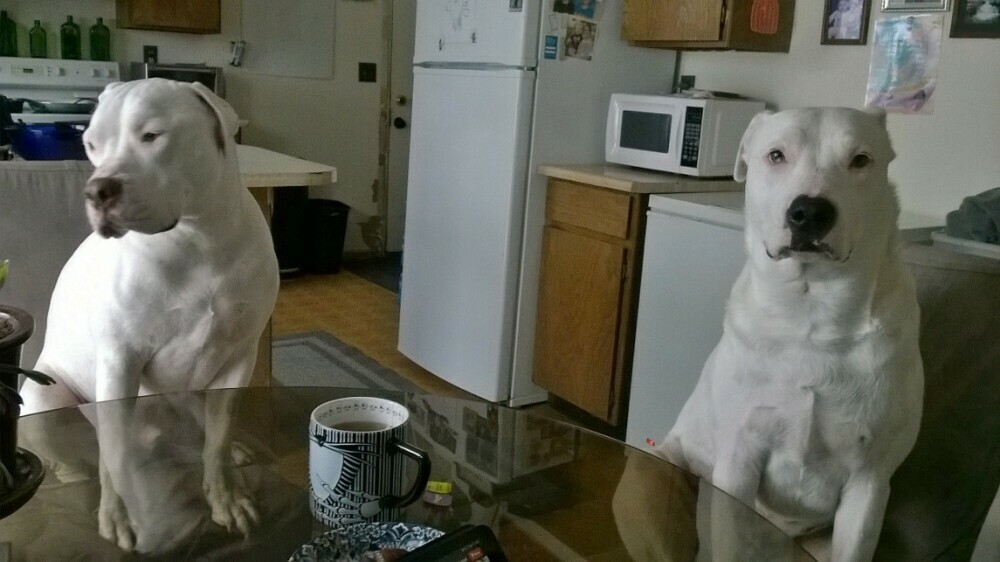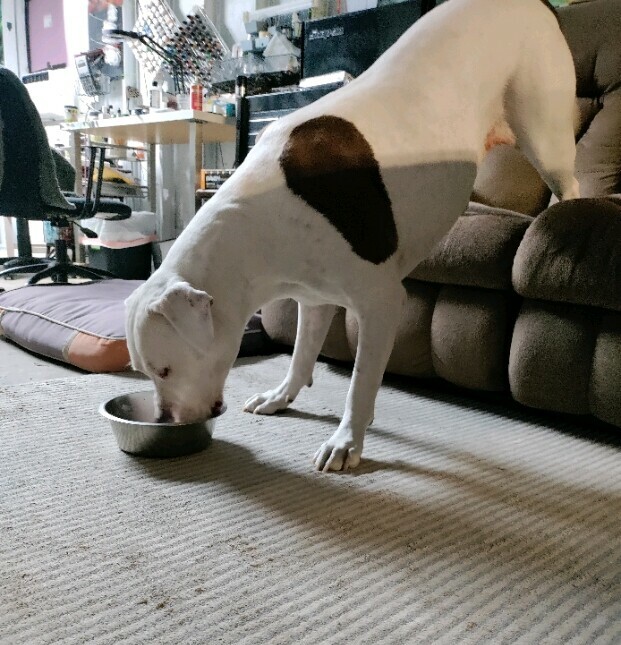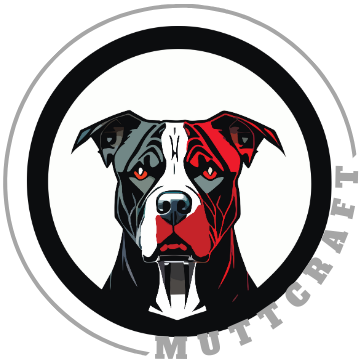Benefits Of Feeding Your Dog A Raw Diet
 When I consider what to feed my dog, I’m hit with a wave of choices. The aisles of pet stores are lined with bags and cans, each touting benefits for my dog’s health. But without a doubt, the heavyweight champion on the shelves is kibble. It’s convenient, has a long shelf life, and promises to meet my dog’s nutritional needs. However, as I delve deeper beyond marketing claims into the nutrition labels and ingredients lists, I have to wonder whether these processed pellets are truly the best option for my companion.
When I consider what to feed my dog, I’m hit with a wave of choices. The aisles of pet stores are lined with bags and cans, each touting benefits for my dog’s health. But without a doubt, the heavyweight champion on the shelves is kibble. It’s convenient, has a long shelf life, and promises to meet my dog’s nutritional needs. However, as I delve deeper beyond marketing claims into the nutrition labels and ingredients lists, I have to wonder whether these processed pellets are truly the best option for my companion.
Kibble typically comprises a blend of proteins, grains, and vegetables, but it often includes fillers, preservatives, and artificial flavors. It’s cooked at high temperatures, which some say might diminish its nutritional value. On the other hand, a raw or whole foods diet for dogs takes cues from ancestral eating habits. This diet includes unprocessed meats, bones, fruits, and vegetables, which aim to provide nutrition in a more natural state.
The interest in feeding dogs raw food stems from a desire to mimic the diet of wild canids and is based on the belief that this way of eating provides the nutritional benefits that are less altered by cooking processes. Supporters of the raw diet assert that such an approach could lead to better health outcomes for dogs, including those related to skin, coat, and digestive health.
As I gather information and balance different viewpoints, it’s clear that the decision between kibble and whole foods isn’t black and white. There’s a spectrum of options and considerations that I need to understand. In the next section, I’ll explore the potential health benefits that have convinced many dog owners to embrace the whole foods diet for their furry friends.
The Potential Health Benefits of a Whole Foods Diet for Dogs
If you’re reading this, I’m betting you care deeply about your dog’s health. I do, too. Dogs are more than pets; they are family. And just like any other family member, we want to make sure they’re eating well. A raw, whole foods diet might be the change you’re looking for. Why? Well, many dog owners have witnessed impressive health transformations in their canine companions after making the switch from kibble to raw foods.
Take their coats, for instance. A shiny coat isn’t just for show; it’s a strong indicator of a dog’s well-being. Feeding your furry friend a diet rich in raw meats, organs, and bone can often lead to a lustrous and healthier coat. Essential fatty acids, which are abundant in raw diets, play a critical role in maintaining the skin’s health, reducing flakiness, and enhancing overall coat shine.
Then, there’s the matter of dental health. Believe it or not, a dog’s teeth can reveal a lot about their diet. Raw diets often include meaty bones, which can act as natural toothbrushes, scraping away plaque and tartar. This can lead to stronger teeth and fresher breath, something any dog owner can appreciate.
The raw diet can also sing praises for digestion. Dogs naturally have a shorter gastrointestinal tract suited for digesting meat. Thus, a whole foods diet can result in more efficient digestion, smaller stools, and a happier gut. This means better absorption of nutrients and less mess to clean up, which is a win-win.
I haven’t even touched on energy levels. Dogs on a raw food diet may exhibit an increase in energy and general vitality. A balanced raw diet provides high levels of protein and fat, which can be great energy sources for active dogs.
But remember, every dog is different. What works for one may not work for another. That’s why the following section will walk through some necessary precautions and safety measures to keep in mind. After all, switching to a raw diet is about improving your dog’s health, not risking it.
Safety and Precautions When Switching to a Raw Diet
When I consider transitioning my dog to a raw diet, safety is my top priority. It’s not as simple as swapping out kibble for raw meat. There are several potential health risks that need to be navigated carefully.
First, let’s talk about the risk of bacterial contamination. Raw meat can be a vehicle for bacteria like Salmonella and E. coli, which are harmful to both dogs and humans. Safe handling practices are crucial. This means storing meat appropriately, sanitizing all surfaces and utensils, and washing my hands thoroughly.
The risk of nutritional imbalances is also a concern. Dogs have specific dietary needs that raw meat alone doesn’t always meet. So, incorporating a mix of bone, organ meats, and even some vegetables is essential. I must research or consult a vet or animal nutritionist to ensure my dog’s meals are complete.
Then there is the transition itself. Switching a dog’s diet abruptly can cause gastrointestinal issues. I take it slow, starting with small amounts of raw food mixed into their usual kibble, gradually increasing the proportion over time.
While there’s a learning curve to getting it right, the risk of not addressing these safety issues can lead to serious health problems for my dog. With care and proper knowledge, I can make the shift to raw feeding as smooth and safe as possible.
Perspectives from Veterinarians, Nutritionists, and Dog Owners
When contemplating a diet change for your dog, expert opinions are valuable. I consulted with veterinarians and animal nutritionists to get their take on raw diets. Most experts agree that while the benefits of a raw food diet can be significant, they don’t come without risk.
The consensus among many experts is that whole foods can provide dogs with a more natural intake of enzymes, vitamins, and minerals. However, they stress the need for balance and variety to avoid deficiencies.
An animal nutritionist highlighted that many commercial kibble diets are formulated to meet the minimum nutritional requirements for dogs. Yet, raw or minimally processed diets might offer a different spectrum of nutrients, potentially leading to improved health outcomes.
To gain a more comprehensive perspective, I spoke to several dog owners who switched their pets to a raw diet. They often reported observing a noticeable increase in energy levels and a decrease in gastrointestinal issues. Their testimonies hint at the tangible benefits a raw diet could offer.
Still, it’s not unheard of for some dogs to experience issues with a raw food transition. Experts recommend starting slowly and observing your dog’s reaction to the new diet.
The take-home here is the importance of personalizing your dog’s diet based on their unique health profile and nutritional needs. A one-size-fits-all approach doesn’t apply when it comes to the best nutrition for our furry friends.
Guiding Your Canine Pal to a Healthier Lifestyle: A Step-By-Step Approach
 If you’ve decided that your dog could benefit from a raw or whole foods diet, it’s my responsibility to provide you clear, actionable steps. You want the best for your fur companion, and that starts with ensuring they receive the nutrients they need. Deciding on a diet change is just the first step; doing it properly is crucial.
If you’ve decided that your dog could benefit from a raw or whole foods diet, it’s my responsibility to provide you clear, actionable steps. You want the best for your fur companion, and that starts with ensuring they receive the nutrients they need. Deciding on a diet change is just the first step; doing it properly is crucial.
First, have a chat with your veterinarian. Every dog is unique, and a professional can give you tailored advice considering your dog’s health history and specific needs. Your vet can point out any potential risks and may recommend supplements or particular foods.
Now, I’ll tell you that transitions should be gradual. Abrupt changes might upset your dog’s stomach. You can start by mixing a small portion of raw food with their regular kibble and then increasing the raw percentage over time.
Observe your dog’s reaction to the new diet. It’s crucial. Pay attention to their energy levels, skin condition, and overall temperament. A dog in good health should be energetic, with a shiny coat and clean teeth.
Keep calibrated measurements. Portion control is important to prevent overfeeding or underfeeding. Understand the caloric requirements of your dog based on their size, age, and activity level, and measure meals accordingly.
Lastly, routine check-ups are important. Monitor your dog’s health with regular vet visits to ensure the new diet continues to meet their needs. Your veterinarian can provide ongoing guidance and make changes if necessary.
Your dog’s leap to a whole food lifestyle is a commitment to their health. Remember, you’re not just changing their diet; you’re enhancing their quality of life. And that, above all, makes the journey worthwhile.
